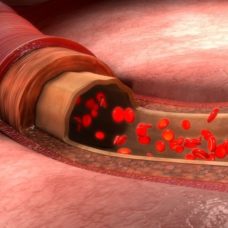The infinitely small nanotech world helps science take great leaps forward, from therapeutic nanosystems treating the body to space elevators.
In recent years, advances in nanosciences have been so numerous and varied that they affect the progression of many different scientific fields.
Whether in physics, chemistry, biology, medicine or space, nanotechnologies help many scientific disciplines to overcome limitations. Harnessing the power of the very small enables the development of novel solutions and the revisiting of old concepts that until now remained inaccessible.
A carbon nanotube space elevator would stretch 10,000 miles high.Click To TweetHere are two potential futuristic concepts, for space and medical applications, that were discussed by a panel of researchers and scientists at Future Con, held at the Walter E. Washington Convention Center in Washington D.C. from June 16th to the 18th.
Nanotech Increases Viability of Space Elevators
For over a century, space elevators have been heralded as a potential revolutionary space transportation system. In 1895, Constantin Tsiolkovsky, a Russian scientist proposed a “celestial castle” that would float in Earth’s geosynchronous orbit (GEO), attached to a high tower on the ground via cables.
Naturally, speculative writers have used variations of space elevators as plot devices. In his 1979 novel The Fountains of Paradise, Arthur C. Clarke describes the construction of the first space elevator in the 22nd century.
Imagine an elevator that goes a couple hundred miles up with nothing but wires to lift it from a ground station to one floating in space. The project sounds unfathomable, but thanks to nanotechnology, it is now scientifically viable.

Lourdes Salamanca-Riba, Professor at A. James Clark School of Engineering at the University of Maryland thinks that if cables were to be made from steel, the system would collapse under its own weight. Salamanca-Riba, who spoke at Future Con, proposed instead carbon nanotubes.
One-atom-thick carbon nanotubes (CNTs) are ultralight but extremely resistant and strong, which makes them perfect to make cables that carry the space elevator to a space base, 10,000 miles up.
With the longest synthesized CNT ever is 50 centimeters long, there’s a long way to go until carbon nanotubes that can reach beyond Earth’s atmosphere are scalable.

Nano System to Genetically Modify Infected Cells
Another panelist at the Future Con was Jordan Green, an associate professor at the Johns Hopkins University School of Medicine in Maryland, who made the observation that, in order to replicate, some viruses integrate their genes into the genome of a cell.
Green then discussed special nanosystems as a means to send genetic information to infected cells to cure them.
For some cancers and hemophilia, such systems could be used to genetically modify infected cell. By restoring and/or repairing genetic inadequacies or errors, affected cells can heal and regain their normal function without being destroyed.
For cancer, targeted gene therapy could encourage cancerous cells to halt malignant spread and even self-destruct.



















Comments (0)
Most Recent